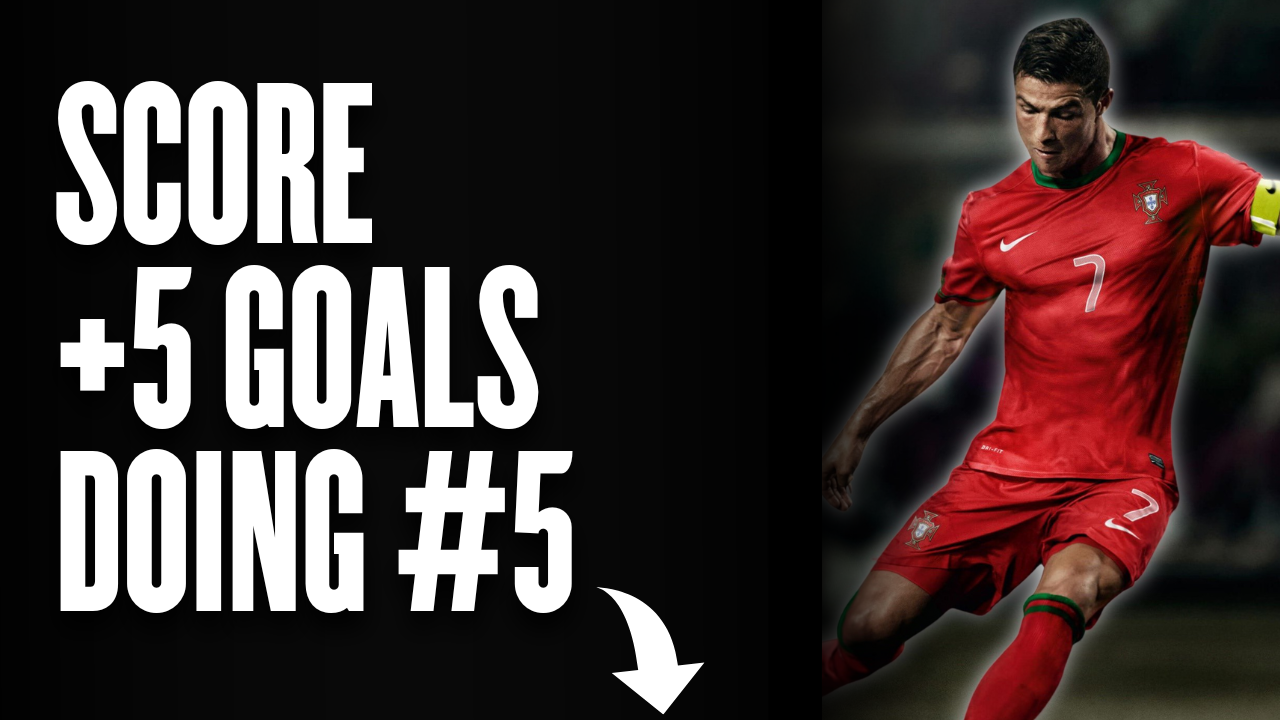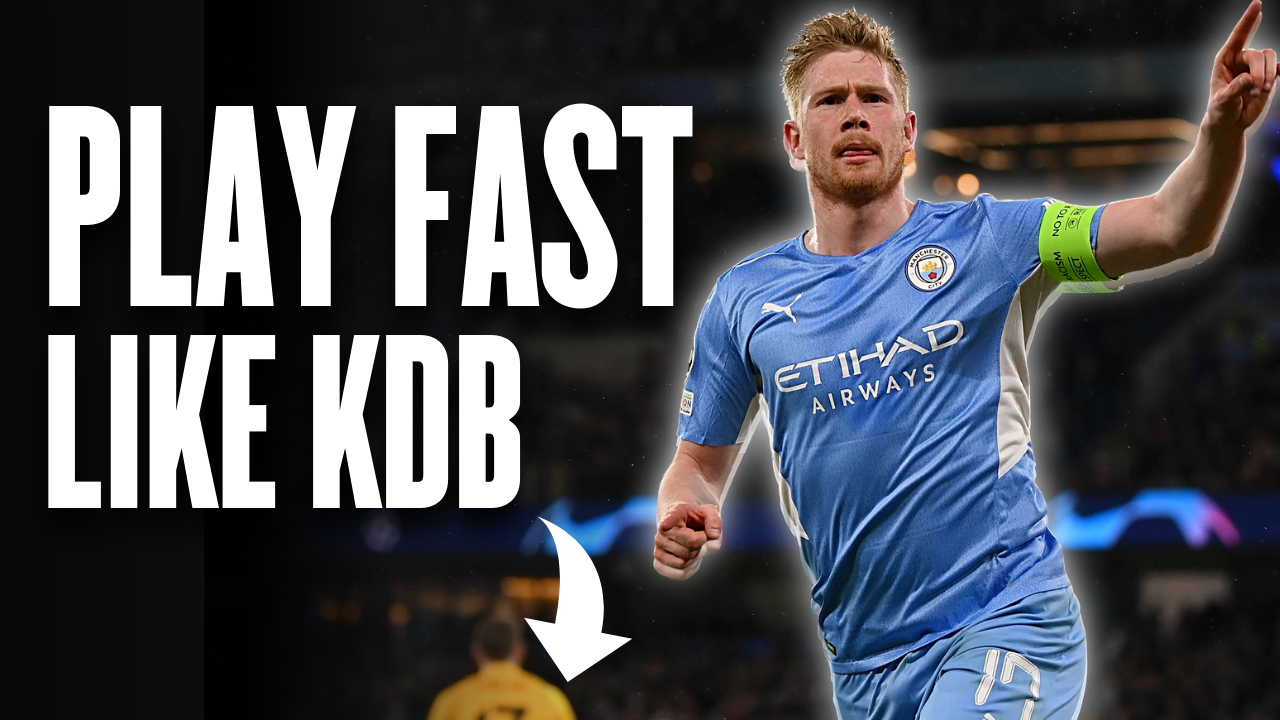
As a football player playing on the wing, one of your primary goals is to deliver assists inside the box. This can be done in various ways, the most common of which is crossing the ball inside the box.
Crossing the ball is a complex technical skill. It is a combination of passing ability, cognitive awareness, and teamwork.
In this article, we will analyze every aspect of crossing in football, both as a technique and as a skill, to help you #levelUP your game.
What Is The Difference Between Crossing Technique & Skill In Football?
Technique in football, and sports in general, is an intentional and effective sequence of movements (i.e. crossing a stationary ball into the box).
Skill in football, and sports in general, is an intentional and effective sequence of movements used to solve (a) specific problem(s) in the constantly changing/chaotic environment football has to offer (i.e. beating a defender in a 1v1 battle, taking a millisecond glimpse inside the box to process the best target option, and crossing the ball with skill and quality to make the job of the attacker/finisher as easy as possible).
As you may notice, technique emphasizes movement quality whereas skill requires a variety of qualities that make the execution of a certain technical aspect more or less effective.
While both you and Trent-Alexander Arnold might be able to cross a curved ball inside the box without a specific target, it requires skill to deliver an assist with a cross inside the box during a world-class game.
You see, Trent-Alexander possesses a greater level of crossing skill that enables him to deliver some beautiful assists in one of the world’s best leagues. It requires a great level of cognitive and technical skills, but also emotional management, focus, control, and dealing with internal and external sources of pressure to be able to express a technical movement with exceptional skill.
Technique can be quantified in the world of kinematics and biomechanics (in terms of joint and approach angles) whereas technical skill is both a quantitative (technical aspect) and qualitative aspect of performance that goes much deeper into each action in comparison to plain technique.
What Are The Differentiating Factors Of Crossing Skill VS Technique?
Skill is your ability to use a technical aspect of your game with efficiency and control to solve a sport-specific problem. This problem you meet in-game and its solution are dependent upon multiple factors that can either increase or decrease that scenarios’ difficulty and complexity.
The more complex a game scenario the harder it is to find a solution and use it with the right timing and technical efficiency. There are certain factors that are present in your ability to execute a technical aspect of the game with skill.
Here are 5 of those according to Hirtz:

*As an affiliate, I'm earning from qualifying purchases without any extra charges being placed on you.
- Kinaesthetic differentiation – your ability to perceive and control the strength/power, timing, and spatial parameters of the ROM of a certain movement
- Space-Time orientation – your ability to perceive and process information from your surroundings to coordinate your movements in space
- Balance – your ability to stay balanced or regain your balance in a constantly changing game environment or solving complex problems in unstable game scenarios
- Complex reactionary ability – your ability to execute a certain movement in a given moment and with a specific timeframe in reaction to the different stimuli you receive during a game
- Rhythm – your ability to time movements in an efficient manner
Having said all of that, we now understand that skill is much more than technique and more applicable to the constantly changing scenarios we meet inside a football match.
IF YOU WANNA LEARN MORE ABOUT “SKILL VS TECHNIQUE” CLICK HERE!
Crossing In Football – What Is It & When Is It Used?
Crossing is a fundamental technical aspect of football used to assist goals. A cross basically is the final pass before a goal. This pass can be either delivered on or off the ground. The aim of a cross is to create the easiest possible scenario for the attacking player to score a goal.
There are various different ways you can whip in a cross based on the part of the foot you use, the spin you give to the ball, etc.
Crossing In Football – A Technical Breakdown
The first and most important step towards mastering crossing as a skill is to nail down the basic technical aspects of it. Technique is the foundational component of any game skill and is the primary determinant of the success or failure of your actions.
Here are some basic coaching points and technical cues that you should be aware of in order to master crossing as a skill in football:
CROSSING TECHNIQUE
- Rapid eye contact with the box (penalty area/second line of attack)
- Decide which crossing technique you’re gonna use (foot part, strike area, spin, etc.)
- Planting foot planted near the ball – toes pointing to the target area
- Appropriate power (direct/slow pace)
- Appropriate height (low cross – strike above center/high cross – strike below center)
COMMON TECHNICAL MISTAKES
- No awareness of the target area
- Wrong technical choice
- Planting foot mistakes – toes not pointing to the target/foot not propelry planted/leg is stiff
- Too direct/Too slow cross
- Inappropriate crossing height
Developing The Skill Aspect Of Crossing In Football
Once you master the basic technical elements of crossing/passing (which usually happens at an early age) you should slowly transition from basic to more complex training stimuli.
This is done in an attempt to develop the skill of crossing in the context of a constantly changing aka chaotic game environment. However, this doesn’t mean that all of your drills should be complex.
In fact, a vast majority of the training time needs to be invested in sharpening the technical base no matter the age, playing level, and experience of the individual.
Training Tips To Improve Crossing Skill In Football
5 TRAINING TIPS TO IMPROVE CROSSING IN FOOTBALL
1. Slow down your crossing drills and strive to achieve kinaesthetic differentiation and technical mastery
The slow pace of a drill will allow you to focus on the quality of each repetition and really take control of all the kinaesthetic elements of the action (approach angle, a quick glimpse of the target, part of the foot used, part of the ball you strike, fluidity in arm movement, etc.).
This can be done in various ways. For example, you can get a feel of your crossing technique before a shooting session by crossing stationary balls into a net without a goalkeeper.

*As an affiliate, I'm earning from qualifying purchases without any extra charges being placed on you.
It is during those repetitions that you wanna focus on every little detail of your crossing technique.
From how you run-up to the ball to where you strike it. Every little detail matters.
2. Use visual and verbal stimuli to add reactive components to your crossing drills
We mentioned that a football game is chaotic and unpredictable in nature. By including certain reactive components in training, we can get the player closer to game-realistic situations.
At the end of the day, it all comes down to the perception-action coupling principle. Perceive information around you, process it, and act upon it with proper timing and quality of action.
Although you can’t perfectly simulate game conditions with reactionary drills, it is wise to use cognitive components inside your crossing drills. For example, you can use a cognitive stimulus that will dictate whether you’re going to perform a low or high cross; a corss at the penalty area or towards the second line of attack; a cross towards the near or the far post.
Using a cognitive stimulus is also great if you’re trying to get into the “habit” of lifting your head up and taking a millisecond glimpse inside the box.
THIS IS HOW TO IMPROVE YOUR REACTIONS IN FOOTBALL
3. Combine crossing drills with other technical skills/off-the-ball movements
Have you been performing shooting drills with a stationary ball or just a roll?
Although this might be a good starting point to get the technical elements of each shot nailed down, it isn’t quite the best way to achieve skill mastery. Including other training stimuli that make the drills more game realistic can help you with that.
From 1v1s and passing combinations to dribbling and reactionary drills. Coupling your crossing drills with other technical/cognitive/physical components can help you master the skill of crossing.
4. Emphasize the most common crossing scenarios and become exceptional at them
Just performing crosses from the sidelines will get you nowhere. Break down your game and find the most common crossing scenarios you get into. Search for 3 to 4 of those and practice them deliberately.
For some it may be a 1v1 down the wing, a cut inside, and a low-cross to the second line of attack while others might be whipping in one touch crosses to the far post. Master the base, then build up your palette.
5. Take that glimpse of the target area – do NOT neglect this!
Awareness of your target is more important than you think. That split-second view of the penalty box triggers signals to your nervous system that heavily dictate the action you’re going to take (and its success!).
Practice that quick look of the target at training so that it can happen subconsciously when it is game time.
You won’t be able to pull this look off with every single cross you take, but the habit of looking up before crossing is key to success.
7 TRAINING STIMULI TO ADD IN YOUR CROSSING DRILLS
- Cognitive (visual/verbal cues)
- Technical (coupling one game skill with another, i.e. dribble to cross)
- Tactical (i.e. using triangle formations that lead the ball towards the wingers for a cross)
- Space (increase or decrease the space of the drill to increase ball control/first touch demands, as well as speed/time of execution, etc.)
- Time (increase or decrease duration of the drill to emphasize skill quality vs skill consistency)
- Touches (place touch limitations to force crossing with wise energy usage)
How To Achieve More Assists With Crosses In Football
- Be aware of the box and your teammates moving inside
- Time your cross properly with the play/the runs made inside the box
- Be aware that your attackers may be performing blindside runs
- Be prepared – analyze the opponent and strike the weaknesses of the defence
- Practice crossing combinations at team training & get to know each teammates’ strengths and weaknessess
- Nail down your crossing technique
- Don’t just whip in a cross to whip in a cross – be impactful and always strive for the best
Final Thoughts
The mastery of the technique and the mastery of the skill are two different things. However, the one depends on the other.
Without technical mastery, you can’t acquire a skill, and without skill acquisition, you cannot develop into an elite-level footballer.
Slow down the process and don’t rush things. Master the technical elements and slowly add various training stimuli that increase complexity and challenge you further.
Working hard is great. Working SMART is genius.
Fast forward your progress and achieve a higher quality of results by training SMART.
RELATED ARTICLES
- Improve Your Technical Skill Level In Football
- 9 Ways To Become A Smart Footballer | (World-Class Level)
- 10 Ways To Build Chemistry With Your Teammates In Football
- This Is How To Improve Your Reactions In Football
- Improve Your Speed Of Play In Football/Soccer
- Offensive Pressure – How To Beat It | A Guide For Footballers
Liked this article? Make sure to SHARE it with your teammates and coaches! Also, don’t forget to follow us on INSTAGRAM where we post daily content to help you #levelUP your performance!




